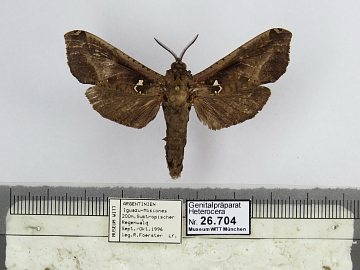South America is biologists’ terra incognita
"When I travelled around Peru in 2001, I understood that South America is a territory, where a huge number of animal and plant species are still understudied. We were working in Ucayali river valley (Amazonia) and in the mountains on the border with Bolivia up to an altitude of 5,100 m. Today – selva, tomorrow – glaciers. What a fantastic mixture of natural complexes. It was entirely unclear where to begin,” says Doctor of Biologe Roman V. Yakovlev.
For the first time the detailed review of Cossidae of Argentina was published by Roman Yakovlev co-authored by  Buenos-Aires enthomologist Fernando Penco (Lista comentada de los Cossidae (Lepidoptera) de Argentina // Historia Natural Tercera Serie Volumen 5 (2) P. 79-94). Great volume of work with literature, research of materials from Argentina, the USA, Chile, Germany, Great Britain came out successful. European museums’ materials were studied by Roman V. Yakovlev, while South American museums’ materials – by the colleague from Argentina. R.V. Yakovlev also received enormous amount of materials from the USA for processing. Thus, thanks to extensive international cooperation of more than 50 people from 6 countries this work had become possible.
Buenos-Aires enthomologist Fernando Penco (Lista comentada de los Cossidae (Lepidoptera) de Argentina // Historia Natural Tercera Serie Volumen 5 (2) P. 79-94). Great volume of work with literature, research of materials from Argentina, the USA, Chile, Germany, Great Britain came out successful. European museums’ materials were studied by Roman V. Yakovlev, while South American museums’ materials – by the colleague from Argentina. R.V. Yakovlev also received enormous amount of materials from the USA for processing. Thus, thanks to extensive international cooperation of more than 50 people from 6 countries this work had become possible.
Taking into account the development of cooperation in the framework of BRICS and expanding scientific collaboration between Russia and Latin America, this is one of the most important steps in this direction.
“This article is the first one from the series of papers intended to be published in cooperation with don Penco. I think that within 5 years we will make great progress in research of fauna of South America and will get a big amount of academic novelty. Rejection of a local, regional topic is a chance to strengthen our positions in international science. The most important direction is definitely the research of Central Asia,” states Roman V. Yakovlev.